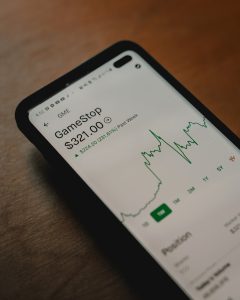Foreign exchange trading, or forex, is a highly volatile market that attracts traders from all over the world. The forex market operates 24/7, and its participants include large banks, financial institutions, and individual traders. Due to its high liquidity and the availability of leverage, forex trading can be extremely profitable. However, like any other market, forex trading requires careful analysis and decision-making. One of the most critical aspects of forex trading is knowing when to buy and when to sell. In this article, we will discuss some of the factors that influence these decisions.
When to Buy:
Buying in forex refers to the act of purchasing a currency pair in the hope that its value will increase in the future. Here are some of the factors that can indicate the right time to buy:
1. Economic indicators: Economic indicators are statistics that reflect the overall health of a country’s economy. These indicators include GDP, inflation, employment rates, and consumer confidence. When these indicators are positive, it is a good time to buy the currency of that country.
2. Interest rates: Interest rates have a significant impact on the forex market. When a country’s central bank raises interest rates, its currency will appreciate, making it a good time to buy.
3. Technical analysis: Technical analysis involves analyzing charts and using indicators to identify trends and patterns. Traders use technical analysis to identify potential buying opportunities.
4. Political events: Political events, such as elections and referendums, can have a significant impact on a country’s currency. Before buying a currency, traders should consider the potential impact of political events on the currency’s value.
When to Sell:
Selling in forex refers to the act of selling a currency pair in the hope that its value will decrease in the future. Here are some of the factors that can indicate the right time to sell:
1. Economic indicators: Negative economic indicators, such as high unemployment rates and low consumer confidence, can indicate a weakening economy. This can lead to a decrease in the value of a currency, making it a good time to sell.
2. Interest rates: When a country’s central bank lowers interest rates, its currency will depreciate, making it a good time to sell.
3. Technical analysis: Technical analysis can also be used to identify potential selling opportunities. Traders use technical analysis to identify trends and patterns that indicate a potential decline in a currency’s value.
4. Political events: Political events, such as wars and conflicts, can have a significant impact on a country’s currency. Traders should consider the potential impact of political events on a currency’s value before deciding to sell.
Risk Management:
It is essential to remember that forex trading involves a significant amount of risk. To minimize risk, traders should implement risk management strategies, such as stop-loss orders and position sizing. Stop-loss orders allow traders to limit their losses by automatically selling a currency pair when it reaches a specific price. Position sizing involves calculating the appropriate position size based on the trader’s risk tolerance and available capital.
Conclusion:
In conclusion, knowing when to buy and when to sell in forex is crucial to achieving success in this market. Traders should consider economic indicators, interest rates, technical analysis, and political events when making these decisions. Additionally, traders should implement risk management strategies to minimize their risk. By carefully analyzing these factors and implementing risk management strategies, traders can increase their chances of success in the forex market.





